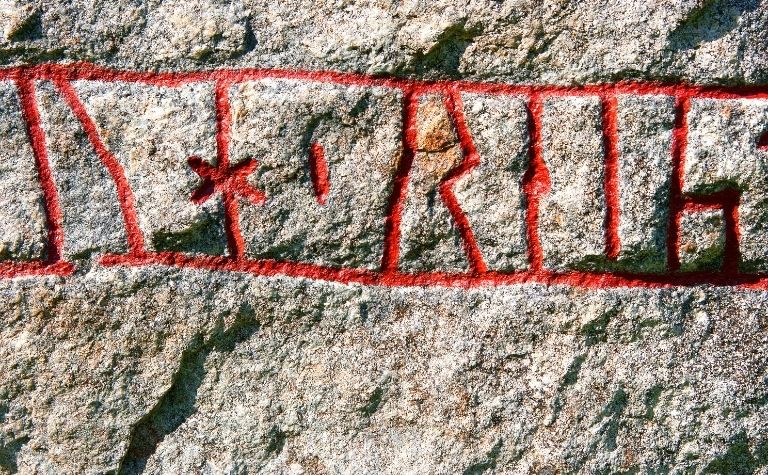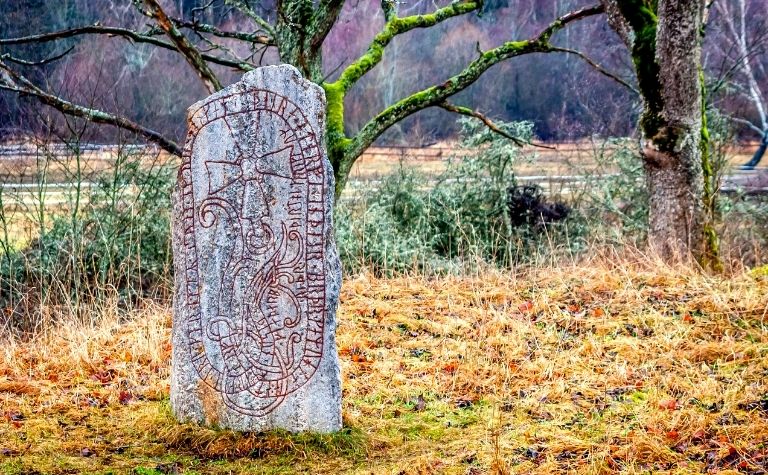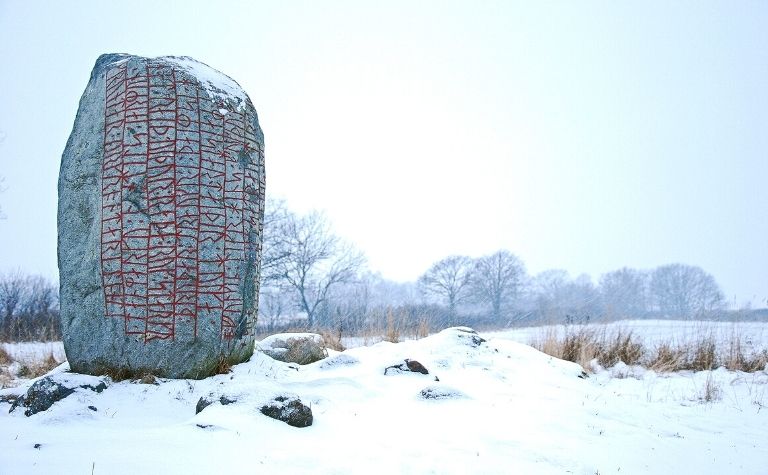The global literacy rate in the twenty-first century is approximately 85%. [1]
However, in Medieval Europe, literacy rates hovered around 20%, though a few countries like England and the Netherlands measured higher. [2] But what about the Vikings?
How many of them could read and write?
Historians estimate that less than 20% of the Vikings were literate.
Viking society lacked formal education as other European countries had, and they didn’t keep written historical records.
Literacy among the Vikings was likely concentrated among those who had the means to acquire books.
Did the Vikings have literature? Were stories important to them? Why didn’t they keep written records? Did the Vikings have schools?
Keep reading to learn the answers to these questions and others.
Also see Great Vikings Kings and Leaders to Know to learn more.

Did The Vikings Have Literature?
Vikings had their own letters called futhark, the runic alphabet. However, there were variations to their lettering and language between people and over time, making translations difficult.
The scarcity of records is due to a lack of materials, as they carved words into stone, bone, wood, and wax.
Weren’t stories important to the Vikings? The Vikings valued storytelling, but the tales weren’t always preserved in writing. Instead, oral storytelling was popular and passed down through the generations.
Some wonder about the accuracy of stories in an oral culture. Yet studies have shown that oral histories often have a high degree of accuracy. [3]
What hindered the Vikings’ from keeping written records? The Vikings did not have literature in the sense of long-form, written storytelling.
This is not to say the Vikings didn’t have written language or stories.
Historians know that they were prolific storytellers of sagas and poems.
The lack of written records had to do, in part, with the time it took to inscribe runes into various materials.
What did Vikings write on, if not paper? The Vikings had inadequate access to paper or a paper-like substance, such as papyrus. Paper didn’t last long in the frigid environment of Northern Europe.
Instead, evidence suggests they wrote on the following materials:
- Bones
- Coins
- Plates
- Wood
- Stones
- Wax
Such materials didn’t lend themselves to long-form storytelling because it isn’t practical to fit an entire tale onto an antler, amulet, or river rock.
Also see Why Didn’t the Vikings Colonize America? to learn more.

Inscribing materials among the Vikings
Besides wax tablets, all these materials took an incredible amount of time to inscribe.
Thus, words on these materials were probably chosen carefully and used sparingly.
It’s important to remember that everyday actions that people today take for granted were time-consuming tasks for Vikings.
For example, it took 35 hours to spin enough yarn for a day’s worth of weaving. That doesn’t count the carding, cutting, and sewing required to make an item of clothing.
Additionally, there was cooking, laundry, milking animals, and looking after children.
Even if a Viking could read and write, they didn’t have time to carve entire stories.
Writing on wax
Wax was used primarily for metalworking, candles, and cosmetics for the hair.
While there is evidence of the existence of wax tablets as writing surfaces, they do not appear to be plentiful.
Historians don’t believe it was common for people in Medieval times to use wax tablets to preserve written records.
Instead, wax tablets probably weren’t used for long-term preservation of writing, but as temporary and reusable surfaces.
Inscribing wood
Wood was the most common writing material among the Vikings.
Unfortunately, wood doesn’t withstand the test of time well, and there are only around 400 pieces that still survive from the Viking era.
Therefore, it is difficult to assess how prolific the Vikings were on wood and the breadth of what may have been written.
Also see Were the Vikings Afraid of Anyone? to learn more.

Did The Vikings Keep Written Records?
It is unclear how much Vikings recorded, as much of what they wrote on wood has been lost to time. The best record we have of Viking writings is the Runestones.
These tended to act as memorials or tributes to a great person who died, such as a warrior.
They are not gravestones, as they are not necessarily where the person died or was buried.
Instead, they are thought to be erected by loved ones as a form of celebration or honor.
As a result, the tales of these people and their adventures are preserved.
But as to a record of their history or even daily accounts of farm life, there is not much-surviving evidence.
As mentioned above, ordinary day-to-day notes for the upper classes were probably written on wax.
As these tablets were used repeatedly, all records would have been smoothed away once the words were no longer needed.
An exception to this is Islandic sagas.
These are written records of great length that primarily focus on the lives and exploits of the upper class.
These accounts even include speech along with other intriguing details.
However, historians are wary of how accurate these accounts are of the times they depict.
The problem is that these sagas only began to be preserved in writing around the twelfth century and beyond.
Thus, the events they refer to were already a few hundred years ago.
Until then, these stories were told orally and could have been greatly embroidered and altered over the centuries.
Hence, while the Icelandic sagas are valuable, they may be more akin to a myth or legend than a historical record.
Also see Explore the Vikings Rankings and Class Systems to learn more.
Did The Vikings Have Schools For Children?
Formal education, such as attending a schoolhouse, wasn’t conventionally part of Viking society.
Instead, knowledge was passed on much like homeschooling, with songs and poetry to be learned in regards to their history and lore.
While some girls and boys were taught letters, these were passed on by a parent, visiting scribe, or a nurse.
But these were not the bulk of the children’s lessons.
Instead, girls had to be instructed on how to do day-to-day tasks: carding and dying wool, spinning, weaving, sewing, cooking, preserving, washing, and how to milk cattle.
Boys needed to learn farming skills, fishing, wayfaring, metalwork, and carving.
This was taught to them by their fathers, uncles, and perhaps older brothers.
Conclusion
The Vikings had a written writing system, some of which has survived to this day.
Historians suspect that those who could read and write were of the upper class.
How much reading and writing was done in a typical day is unknown.
The most common materials for more casual missives were wax and wood, which were easily lost to time.
Inscribing into stone and metal was an onerous task; therefore, what was written on these materials was brief.
However, they do prove the Vikings were not illiterate.
Also see Did the Vikings Share Their Wives? to learn more.
